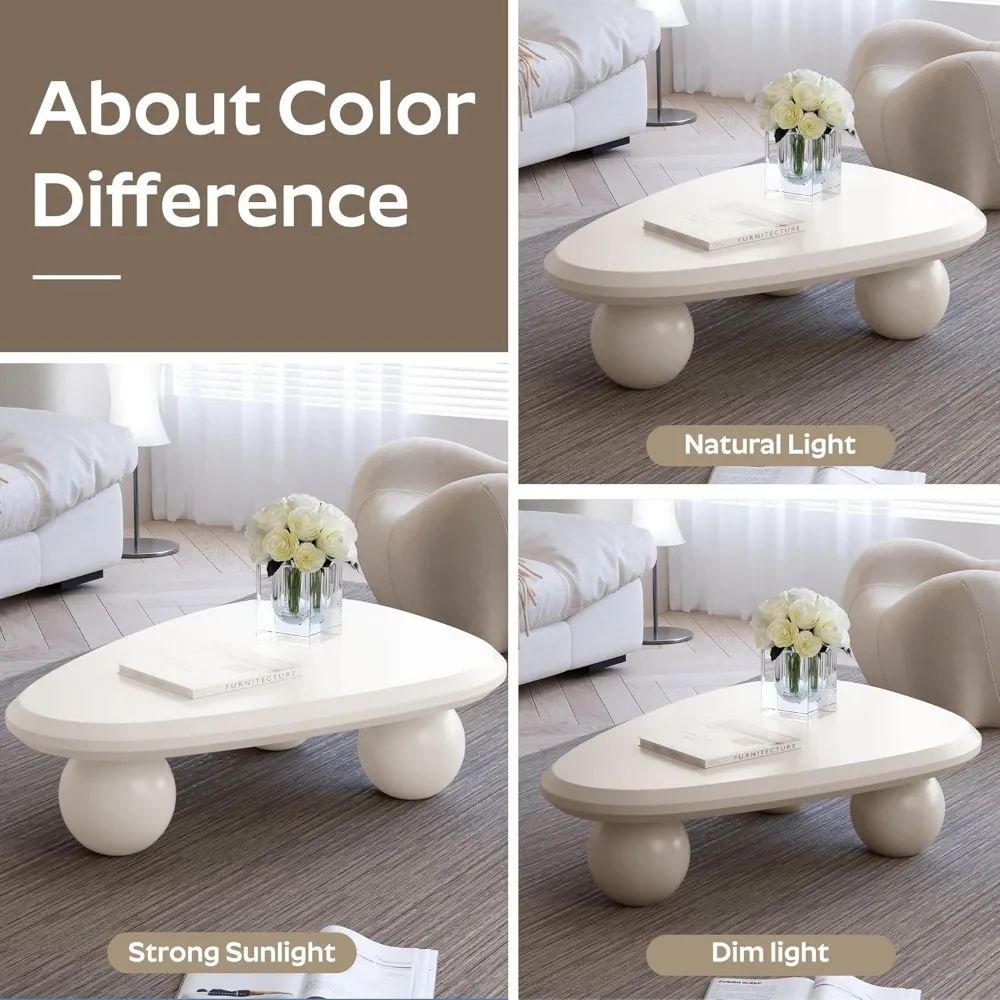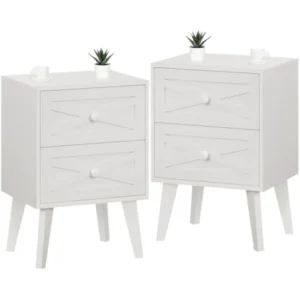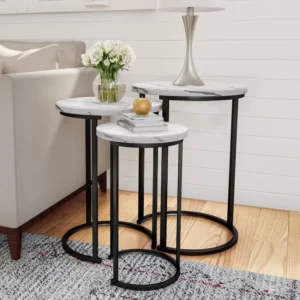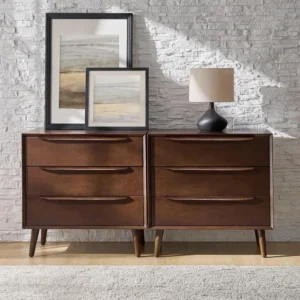Understanding Marble Properties: Why Special Care Matters
Marble coffee tables are more than just beautiful furniture pieces—they’re investments that require specific care to maintain their elegance. At its core, marble is a natural stone primarily composed of calcium carbonate, which gives it its distinctive beauty but also makes it vulnerable to certain elements.
Understanding marble’s key properties will help you provide the proper care:
- Porosity: Marble naturally contains tiny pores that can absorb liquids, potentially leading to staining if spills aren’t addressed promptly
- Softness: Compared to other stones like granite, marble is relatively soft (rating 3-4 on the Mohs hardness scale), making it susceptible to scratches
- Acid Sensitivity: Perhaps most importantly, marble reacts chemically with acidic substances (anything below pH 7), causing etching—permanent dull marks that damage the surface finish
The finish of your marble also affects maintenance requirements. Polished marble has a glossy, reflective surface that shows etching more readily, while honed marble has a matte finish that may be more forgiving with etching but can be more prone to staining due to its more open pore structure.
Understanding these fundamental marble surface coffee table design characteristics is essential for implementing the proper care routines we’ll cover throughout this guide.
Essential Supplies for Marble Coffee Table Care
Assembling the right care toolkit is your first step toward proper marble maintenance. Each item serves a specific purpose in addressing marble’s unique properties:
- Soft microfiber cloths: Essential for dusting and cleaning without scratching the surface; avoid rough materials that could damage the finish
- pH-neutral stone cleaner: Specifically formulated for natural stone with a neutral pH (7-8) that won’t trigger etching reactions
- Mild dish soap: A gentle option like Dawn (diluted properly) works for regular cleaning when stone-specific cleaners aren’t available
- Marble sealant: Penetrating sealers (not topical) fill marble’s porous structure from within, creating an invisible barrier against stains
- Marble polishing powder: For addressing minor surface etching and restoring shine to damaged areas
- Poultice materials: Absorbent powders (like baking soda) combined with cleaning agents for drawing out deep stains
- Protective accessories: Coasters, trivets, and placemats act as barriers between the marble and potential damage sources
The specific type of marble and finish on your coffee table will determine which supplies you’ll use most frequently. For example, tables with different marble finishes may require slightly different cleaning approaches, with honed surfaces generally being more forgiving but requiring more frequent sealing.
Daily Cleaning Routine: Keeping Your Marble Pristine
A consistent cleaning routine prevents dirt buildup and minimizes the need for deeper cleaning that might stress the stone. Here’s how to keep your marble looking its best:
Daily dusting: Use a soft microfiber cloth to gently remove dust using straight, directional movements rather than circular motions. This prevents fine particles from scratching the surface.
Weekly deeper cleaning:
- Clear everything from your table surface completely
- Mix a gentle cleaning solution of 1 tablespoon mild dish soap to 1 quart (946 ml) of warm water
- Dampen (not soak) a clean microfiber cloth with the solution and wipe the entire surface using gentle pressure
- Rinse by wiping with a separate cloth dampened with clean water to remove any soap residue
- Immediately dry thoroughly with a soft, dry cloth to prevent water spots from forming
Immediate spillage response: Blot (don’t wipe) spills immediately with an absorbent cloth to prevent liquid absorption into the stone.
The frequency of cleaning should align with usage patterns—tables in high-traffic areas or homes with children might need daily attention, while less frequently used tables can manage with twice-weekly cleaning. Proper care ensures the lasting beauty of mid-century modern marble top coffee tables, preserving both their function and aesthetic appeal.
Handling Spills Immediately: The Critical First Response
When it comes to marble, the 30-second rule applies—immediate response to spills can mean the difference between a quick cleanup and permanent damage. Always blot (never wipe) spills with an absorbent cloth or paper towel to prevent spreading the liquid and pushing it deeper into the stone.
Here’s how to handle common spills on marble surfaces:
| Spill Type | Response Method | Time Sensitivity |
|---|---|---|
| Water | Blot immediately and dry thoroughly | Can cause water spots within minutes if left standing |
| Coffee/Tea | Blot, then clean with mild soap solution | Can begin staining within 5-10 minutes |
| Wine | Blot, then apply a paste of baking soda and water | Red wine can begin staining within 15-30 minutes |
| Oil-based substances | Blot excess, apply cornstarch or talcum powder to absorb remainder | Oil can penetrate within 10-15 minutes |
| Acidic liquids (juice, vinegar) | Blot immediately, rinse with water, dry completely | Can cause etching instantly on contact |
The urgency of your response cannot be overstated. Acidic substances begin etching on contact, while other liquids can penetrate marble’s porous surface within minutes. This knowledge applies beyond just marble tables—similar principles apply when maintaining different table top materials throughout your home.
Stain Removal Techniques for Different Types of Marble Stains
Despite your best efforts, stains may occasionally develop on your marble coffee table. The good news is that many stains can be removed with the right approach. The key is identifying the stain type and applying the appropriate treatment:
Organic Stains (food, coffee, tea, wine):
1. Create a hydrogen peroxide poultice by mixing 12% hydrogen peroxide (readily available at beauty supply stores) with a few drops of ammonia
2. Spread the mixture ¼-½ inch (6-12mm) thick over the stain
3. Cover with plastic wrap and tape the edges
4. Let it sit for 24-48 hours, allowing the poultice to draw out the stain
5. Remove the poultice and rinse thoroughly with water
Oil-Based Stains (cooking oil, cosmetics):
1. Make a paste using baking soda or diatomaceous earth mixed with water
2. Apply the paste ¼-½ inch thick over the stain
3. Cover with plastic wrap with small air holes punched in it
4. Allow to dry completely (usually 24-48 hours)
5. Remove the dried paste and clean with warm water
Water Spots and Rings:
1. For minor spots, buff gently with a dry, soft cloth
2. For stubborn water marks on honed (not polished) marble, very gently buff with 0000-grade steel wool
3. Rinse thoroughly and dry immediately
Rust Stains:
1. For light rust, use a specialized poultice with a marble-safe rust remover
2. For stubborn rust, consult a professional as these stains often require commercial products
Ink Stains:
1. For small spots, try a cotton ball dampened with acetone (not nail polish remover with additives)
2. For larger stains, make a poultice using acetone and a white absorbent powder
Understanding the properties of different marble types used in coffee tables helps determine the best stain removal approach, as some marbles are more porous or reactive than others.

Addressing Etching and Surface Damage
Etching—those dull spots that appear when acidic substances contact marble—is perhaps the most common form of marble damage. Unlike stains that sit on top of the stone, etching is actual chemical damage that removes the surface finish.
How to identify etching and damage:
- Light etching: Appears as dull spots that look like water marks but don’t disappear when dry
- Deep etching: Creates a rough texture you can feel when running your fingers over the surface
- Scratches: Physical damage that creates visible lines across the surface, often with a white appearance
For minor etching on polished marble, try this DIY repair approach:
- Clean the area thoroughly and ensure it’s completely dry
- Apply a small amount of marble polishing powder (available at home improvement stores) to the etched area
- Using a soft, damp cloth, gently buff the area in small circular motions
- Continue buffing for 3-5 minutes, adding small amounts of water as needed
- Wipe clean and evaluate results; repeat if necessary
For honed marble, etching is often less visible but may still require attention if the damage is deep. Our collection of mid-century modern coffee tables features various finishes, each with specific care requirements.
Know when to call professionals: If etching covers large areas, penetrates deeply, or your DIY efforts don’t produce satisfactory results, professional refinishing may be necessary. Similarly, deep scratches or chips require expert attention.
Sealing Marble: Protection Against Stains and Damage
Sealing is your marble coffee table’s first line of defense against staining. A quality sealer works by filling the microscopic pores in marble, creating an invisible barrier that repels liquids and gives you crucial extra seconds to clean spills before they penetrate.
Testing if sealing is needed:
Place a few drops of water on your marble surface. If the water beads up, your sealant is still effective. If the water begins to absorb within 2-3 minutes, creating a darker spot, it’s time to reseal.
Complete sealing process:
- Surface preparation: Clean thoroughly and remove any existing stains. The surface must be completely clean and dry (wait 24 hours after cleaning)
- Application: Pour a small amount of penetrating sealer onto the surface and spread evenly with a soft cloth in a thin, even layer
- Dwell time: Allow the sealer to penetrate for 5-10 minutes (follow manufacturer instructions precisely)
- Remove excess: Wipe away any unabsorbed sealer completely before it dries
- Additional coats: Apply 2-3 coats for maximum protection, waiting 15-30 minutes between applications
- Curing: Allow the sealed surface to cure for 24-48 hours before regular use
Most marble coffee tables should be resealed every 6-12 months, but high-use tables may need more frequent attention. Tables in low-traffic areas might go longer between applications. The aesthetic appeal of marble top coffee tables remains pristine much longer with proper sealing.
Mid-Century Modern End Table Sets of 2, Mid-Century Modern Square Side & End Tables, Mid-Century Modern White Side & End Tables
$348.24 Select options This product has multiple variants. The options may be chosen on the product pageMid-Century Modern Solid Wood Coffee Tables, Mid-Century Modern Teak Coffee Tables
$879.95 Select options This product has multiple variants. The options may be chosen on the product pageMid-Century Modern Danish Coffee Tables, Mid-Century Modern Oval Coffee Tables, Mid-Century Modern Solid Wood Coffee Tables
$390.05 Select options This product has multiple variants. The options may be chosen on the product pageMid-Century Modern Nesting Side & End Tables, Mid-Century Modern Nesting Table Sets, Mid-Century Modern Round Side & End Tables
Price range: $239.35 through $273.06 Select options This product has multiple variants. The options may be chosen on the product pageMid-Century Modern End Table Sets of 2, Mid-Century Modern Walnut Side & End Tables
Price range: $978.89 through $1,957.38 Select options This product has multiple variants. The options may be chosen on the product pageMid-Century Modern Coffee & End Table Sets, Mid-Century Modern Coffee Table Sets, Mid-Century Modern Oval Coffee Tables
Price range: $257.48 through $331.04 Select options This product has multiple variants. The options may be chosen on the product page
Preventative Care: Daily Habits to Protect Your Marble
The most effective marble care strategy is preventing damage before it occurs. Implementing these simple habits will significantly extend your marble coffee table’s beauty:
- Use coasters consistently: Place them under all beverages, even water glasses, to prevent water rings and potential staining
- Add placemats or trivets: Position them under anything that might scratch or damage the surface, especially items with rough bottoms
- Use heat protection: Never place items warmer than 130°F (54°C) directly on marble—always use trivets with rubber feet (not metal) under hot dishes, mugs, or appliances
- Apply furniture pads: Attach small felt or rubber pads to the bottoms of any decorative items that permanently sit on your marble
- Establish a dusting schedule: Dust at least every other day to prevent particles from scratching the surface during use
- Create a “no-go” list: Educate household members about items never to place directly on marble:
- Makeup and skincare products (often acidic)
- Metal objects that can scratch
- Electronics that generate heat
- Writing implements that could mark the surface
These preventative measures are especially important for preserving the elegant lines and proportions of rectangular coffee tables with marble tops, where damage would be highly visible across the expansive surface.

Products and Substances to Avoid: Protecting Your Investment
Many common household products can permanently damage marble. Knowing what to avoid is just as important as using the right products for care.
| Harmful Products | Why They Damage Marble | Safe Alternatives |
|---|---|---|
| Vinegar, lemon, citrus | Acidic content causes immediate etching | pH-neutral stone cleaner |
| Bathroom, tile, grout cleaners | Contain acids for soap scum removal | Mild dish soap solution |
| Abrasive powders (Ajax, Comet) | Scratch polished surfaces | Non-abrasive stone-specific cleaners |
| All-purpose cleaners | Often contain citric acid | Stone-specific pH-neutral cleaners |
| Bleach products | Can discolor and damage sealant | Hydrogen peroxide for stain lifting |
| Glass cleaners | Contain ammonia that can dull finish | Microfiber cloth with plain water |
| Scrubbing pads/sponges | Create micro-scratches | Soft microfiber cloths |
| Hard bristle brushes | Abrade polished surfaces | Soft cloth or soft-bristled brush |
| Regular steel wool | Too abrasive for marble | 0000-grade steel wool (honed marble only) |
When styling marble coffee tables in mid-century settings, the authenticity of design is complemented by surfaces free from damage caused by improper cleaning products. Preserving the material’s natural beauty requires using only marble-safe cleaning agents.
Professional Maintenance: When to Call the Experts
While regular home maintenance keeps marble beautiful, certain situations call for professional expertise. Recognizing when to seek professional help can prevent further damage and restore your marble coffee table to its original splendor.
Situations requiring professional care:
- Deep stains that persist after multiple DIY removal attempts
- Significant etching across large areas of the table
- Physical damage including chips, cracks, or deep scratches
- Widespread dullness that doesn’t respond to home polishing
- Severe water marks or rings that have penetrated deeply
Professional marble restoration typically involves machine polishing using diamond abrasives of progressively finer grits, followed by professional-grade polishing compounds. This process costs approximately $10-30 per square foot, depending on the damage severity and your location.
Finding qualified stone care professionals:
- Look for certification from stone industry organizations
- Request references from previous marble restoration projects
- Ask about their specific experience with marble coffee tables
- Request a detailed written estimate of the work needed
The decision between DIY maintenance and professional restoration often comes down to understanding the differences in care requirements between materials. If you’re considering alternatives, our guide comparing marble versus wood coffee tables can help you understand the maintenance implications of each material.
Quick Reference Guide: Marble Coffee Table Care Do’s and Don’ts
For easy reference, keep this simple guide handy to maintain your marble coffee table’s beauty:
| DO | DON’T |
|---|---|
| Blot spills immediately | Let liquids sit on the surface |
| Use pH-neutral cleaners (pH 7-8) | Apply acidic products (vinegar, lemon juice, etc.) |
| Place coasters under all beverages | Set glasses or mugs directly on marble |
| Use trivets under hot items | Place items over 130°F (54°C) on the surface |
| Dust regularly with soft microfiber | Use paper towels that can scratch |
| Seal the marble every 6-12 months | Assume one-time sealing is permanent |
| Dry the surface completely after cleaning | Allow water to air dry (causes spots) |
| Use cutting boards for food prep | Cut directly on marble surface |
| Test cleaners in an inconspicuous spot | Apply new products to visible areas first |
| Lift objects when moving them | Drag items across the surface |
| Clean with a damp (not wet) cloth | Oversaturate the surface when cleaning |
| Address stains promptly with proper methods | Use generic stain removers not made for stone |
This approach to marble care applies to various table styles in the Hearth Forms collection, including our elegant round coffee tables that serve as stunning focal points in any living space.

Frequently Asked Questions About Marble Coffee Table Care
Is baking soda safe for cleaning all marble surfaces?
While baking soda is non-acidic and generally safe for marble, its mild abrasiveness means it should only be used cautiously on honed (matte) marble and avoided on polished surfaces where it may cause dulling.
Can I use Windex on my marble coffee table?
No, glass cleaners like Windex typically contain ammonia that can dull and damage marble’s finish over time. Stick to pH-neutral cleaners specifically formulated for natural stone.
Will vinegar remove hard water stains from marble?
Never use vinegar on marble. Despite its effectiveness on other surfaces, vinegar’s acidity will cause immediate etching (permanent damage) to marble surfaces. Instead, use a stone-safe poultice or consult a professional.
What exactly is etching on marble surfaces?
Etching is a chemical reaction that occurs when acidic substances contact marble, dissolving the calcium carbonate and creating dull spots or marks that appear as “water stains” but are actually permanent surface damage.
What’s the difference between a topical and penetrating sealer?
Penetrating sealers absorb into marble’s pores to create a protective barrier from within, while topical sealers sit on the surface. Penetrating sealers are preferred for marble as they don’t alter the appearance and allow the stone to breathe.
Is honed or polished marble better for coffee tables?
Both finishes have advantages: polished marble shows fewer stains but displays etching more prominently, while honed marble conceals etching better but is more susceptible to staining. Your lifestyle should determine your choice.
How does caring for white marble differ from colored marble?
White marble typically shows staining more readily than darker varieties and may require more frequent sealing—approximately every 3-6 months versus every 6-12 months for colored marble.
For additional information on complementary furniture that may require similar care, explore our collection of mid-century modern side and end tables that pair beautifully with marble coffee tables.







